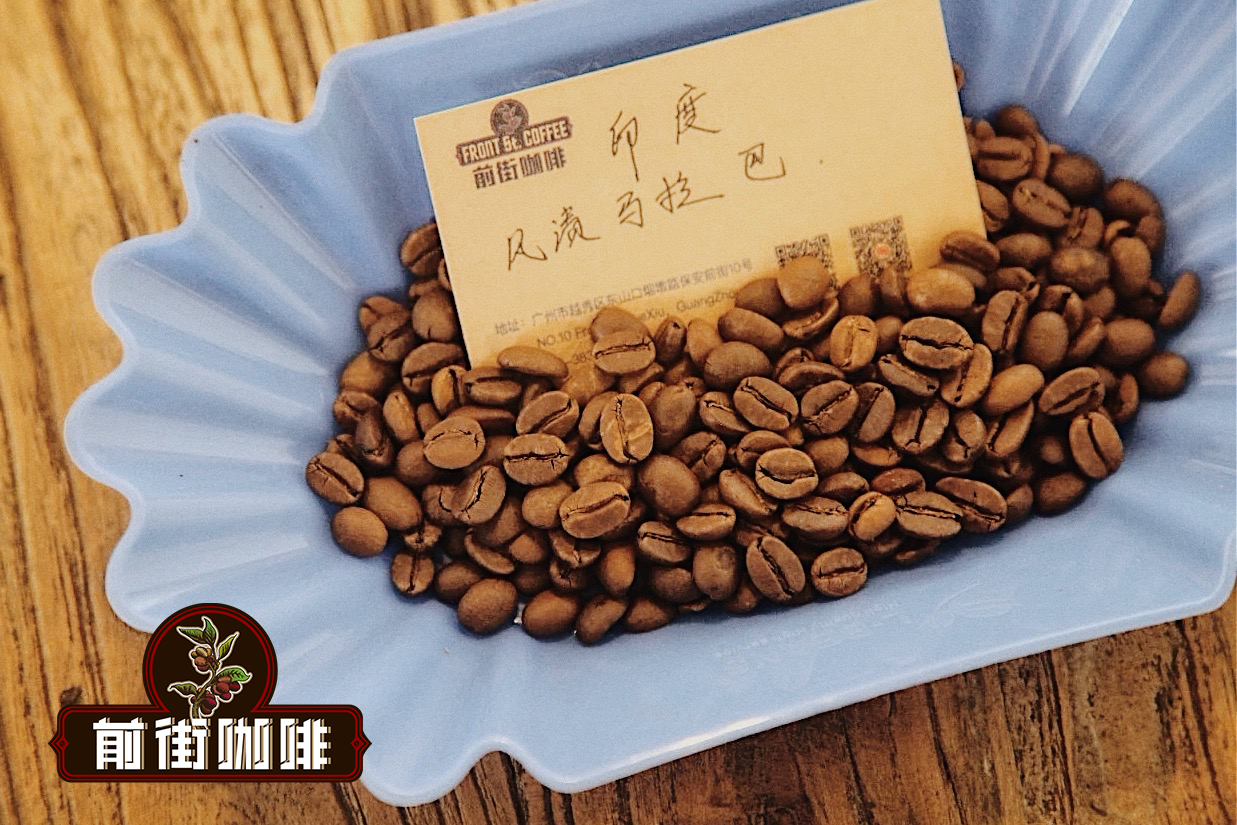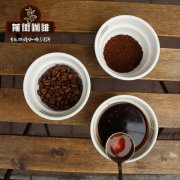Flavor characteristics of Indian monsoon Malaba coffee monsoon treatment of coffee beans
The background of Malaba, India
In the 17th century, a Muslim named BABA BUDAM made a pilgrimage to Mecca and brought coffee tree seeds back to India. He planted the seeds near his hut in mysore. In 1840, the British began to grow coffee in South India. Karnataka, which is located in the southwest of malabar, India, is the main producing area, and coffee beans are in the shape of large grains. But it's a high-end product of India.
India used to be a British planting land. During British rule, a large number of raw coffee beans were packed in sacks and piled up in the port waiting for ships to come, often waiting for four to six months. Coffee beans were blown by the southwest monsoon in the port for a whole season, coupled with absorbing the moist and warm air of the sea, which made the raw beans expand about twice as large and caused ripening, and the color of the whole raw beans changed from green to white, but the weight became lighter. The roasted raw beans are mild and sweet, smooth in taste, dark in color, fragrant, mellow and fragrant. British people describe it as "as smooth as Velvet, soft and delicious" because it is so unique because it is blown by the Indian Ocean monsoon throughout the season. From then on, the bean was named monsoone.
Flavor characteristics of Indian monsoon Malaba coffee
The Indian monsoon Malaba India Monsoon Malabar AA is a typical Indian bean with a very different flavor from the Central and South American and African beans we often drink. The most important thing is to use a very special "monsoon treatment" to deal with the raw coffee beans after the pulp is removed. The aim is to restore the unexpected flavor of coffee beans that took months at sea to arrive at their destination in the age of canvas sea trade.
The palate has hazelnut creamy aromas with a hint of roasted almonds, with malt chocolate caramel finish and walnut aromas, soft acidity and dry flavor.

Monsoon treatment method
Monsoon treatment is the average spread of unwashed coffee cherries in a unique warehouse, stacked at a height of about 4-6 inches. The warehouse has only a roof without walls, and the floor is covered with bricks to prevent raw beans from getting wet, and workers are asked to keep stirring.
Then the coffee is packed in loose gunny bags and stacked on wooden stakes, with enough space between each row for the free circulation of monsoon air. Coffee absorbs moist moisture, the monsoon air completes the natural air drying process in 12-16 Celsius, and the coffee bean expands to twice its original size.
Inflated coffee beans are repackaged at intervals from one bag to another to prevent mold growth and ensure consistency. Then the coffee is polished, graded according to the size of the beans, and fumigated to prevent the attack of the weevil. The most blond color is golden, and the sour taste fades, making it an Indian monsoon Malaba coffee.
Important Notice :
前街咖啡 FrontStreet Coffee has moved to new addredd:
FrontStreet Coffee Address: 315,Donghua East Road,GuangZhou
Tel:020 38364473
- Prev
Ethiopian Coffee Culture Coffee Flavor characteristics of different producing areas in Ethiopia
Ethiopia is recognized as the birthplace of coffee, and the coffee produced is also highly respected in the boutique coffee market, and Ethiopian coffee is almost available on the menus of coffee shops around the world. But why is Ethiopian coffee so well received? How well do you know this coffee-producing country? Ethiopia's producing areas vary greatly, with each producing area, micro-producing area and even farm production.
- Next

How to understand the method of 46 brewing
The World Coffee Brewing Competition is an annual event in which contestants will compete for the title. The game is divided into two rounds. The first round of competitors produced four beverages in mandatory and open services. The person with the highest score will continue to compete in the final, which consists only of open services. The competitor with the highest score won the championship. What does this mean for coffee drinkers like you and me? Organic
Related
- Beginners will see the "Coffee pull flower" guide!
- What is the difference between ice blog purified milk and ordinary milk coffee?
- Why is the Philippines the largest producer of crops in Liberia?
- For coffee extraction, should the fine powder be retained?
- How does extracted espresso fill pressed powder? How much strength does it take to press the powder?
- How to make jasmine cold extract coffee? Is the jasmine + latte good?
- Will this little toy really make the coffee taste better? How does Lily Drip affect coffee extraction?
- Will the action of slapping the filter cup also affect coffee extraction?
- What's the difference between powder-to-water ratio and powder-to-liquid ratio?
- What is the Ethiopian local species? What does it have to do with Heirloom native species?

